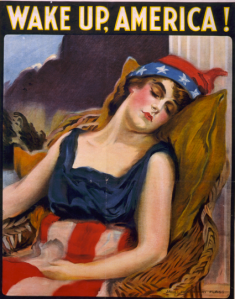Not only is contraception good for women’s health, it is good for the health of a society, for the well-being of all its citizens.
Humans are social animals and smooth social functioning requires social structures and behavioral specialization, particularly involving group protection and child rearing. In Paleolithic tribal units, comprising between 30 and 150 individuals, interactions within the group were largely motivated by instinctual impulses and behaviors.
The functions of control and caring, essential to group cohesion, tend to be instinctively assumed by males and females, respectively. The steroid, testosterone, and the neuropeptide, arginine-vasopressin (AVP), usually in higher levels in males, promote aggression and the urge to control. By contrast, the steroid, estrogen, and the neuropeptide, oxytocin (OXY), normally higher in females, promote attachment and care-giving behavior.
Prior to the ready availability of contraceptive methods, the life-long preoccupation of women with childbirth and child-rearing robbed society of the wider civilizing force of female caring. Moreover, prior to the 19th century, with little opportunity for education, women had hardly any chance to contribute to the wider social good through political activity.*
In the 19th century, a few educated women instigated a great many of the unprecedented social reforms that took place at the time. Thus, educated women, often eschewing marriage and freed from the bonds of child-bearing and child-rearing, contributed enormously to social welfare in both America and Europe. We who are alive today can hardly imagine the conditions of life endured by those who lived only two centuries ago.
For example, Clara Barton and Florence Nightingale introduced the modern-day principles of nursing care as a consequence of witnessing the horrors of medicine during warfare. Barton was a field nurse in the American Civil War, and she afterwards established the American Red Cross, one of our most respected social-welfare organizations. Nightingale, a brilliant English woman and a skilled mathematician, cared for soldiers during the disastrous Crimean War, transforming the practice of battlefield care. She also developed mathematical models of epidemiology that improved mortality statistics in battlefield hospitals. She is viewed as the mother of modern nursing, but is less well known for her intellectual accomplishments.
Women were also essential participants in the abolitionist movement, inspired and supported by Harriett Beecher Stowe, Susan B. Anthony, Harriett Tubman, and Lucretia Mott, one of the founders of co-educational Swarthmore College, as well as by two Grimke sisters from Charleston, Sarah and Angelina, who worked with northern abolitionists.
Social reforms of the 19th century, which were promoted primarily by women, but which did not come to fruition until the 20th century, included equal rights for women themselves, such as women’s suffrage, as well as the right to limit pregnancy by means of contraception. A great number of women were involved in these causes—too many to name or number—but some of the most notable included Elizabeth Cady Stanton, one of the earliest suffragists, who wrote the Declaration of Sentiments (modeled on the Declaration of Independence); Sara Josephine Baker, a child-welfare advocate who is said to have saved the lives of 90.000 children in New York; and Margaret Sanger, who actively advocated for birth control and founded the organization that became Planned Parenthood.
Many of these women were both educated and celibate. Others intentionally limited the number of their children as best they could. It could be argued that the education of women in the nineteenth century catalyzed the wide-spread social reforms of the past two centuries.
Here are some interesting facts:
- The first birth-control clinic in the U.S. was opened in 1916 by Margaret Sanger, who was almost immediately arrested and went to trial. She was convicted of running “a public nuisance” and the trial judge ruled that “women did not have the right to copulate with a feeling of security that there will be no resulting conception.”
- It required a Supreme Court ruling in 1965 (Griswold vs. Connecticut) to overturn state laws prohibiting the use of contraceptives by married people.
- Roe vs. Wade, the Supreme Court ruling overturning state laws prohibiting abortion during the first trimester, occurred in 1973, a mere four decades ago.
- U.S. law does not allow birth-control information to be included in government-sponsored or government-funded aid to overpopulated, starving, and disease-ridden foreign countries.
Women, their concerns, and their value structures, are largely left out of political decision-making, even today.
Still, the virtues of caring and cooperation are at the very core of any civilized culture. Indeed, recent evidence suggests that civilization may have become possible, at least in part, because of decreased human male testosterone levels.** Anthropological evidence indicates that this occurred in humans following the Neolithic revolution, as agriculture came to contribute increasingly to human nutrition. The resulting decrease in male competition allowed the rise of large aggregates of cooperating people–a phenomenon we call civilization.
Because women tend to be more naturally empathetic than men and less prone to violence, their influence serves as a civilizing force on those cultures in which they are allowed power. We currently need more women in decision-making positions.
The very survival of civilization depends on it.
*A few notable exceptions were female monarchs, who ruled during the Age of Enlightenment. I plan to address the extraordinary influence of these women on European and world culture in another blog.
**The evolutionary selection pressures favoring increased socialization and decreased testosterone would make interesting speculation.
The final post in the series is on contraception and environmental preservation.




What a great history lesson, JoAnne! Are you familiar with the New Morning Foundation? A nonprofit looking to educate about contraception.
Thanks, Jane. No, I haven’t heard about them. Will check it out with Google!